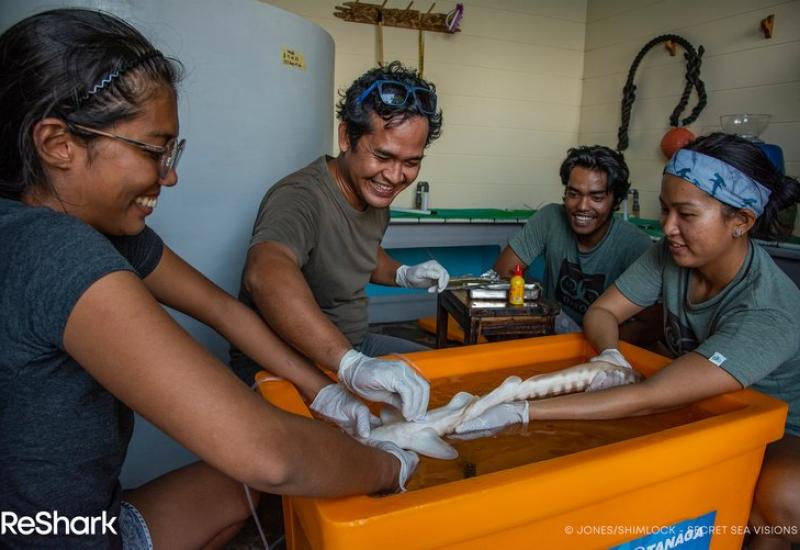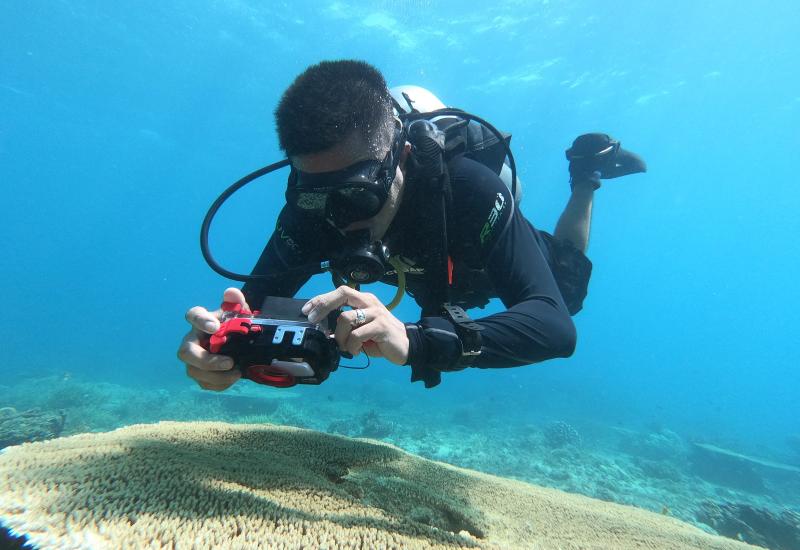Conservation Photographer Shane Gross Recognized with the September 2023 Seiko Sea Hero Award
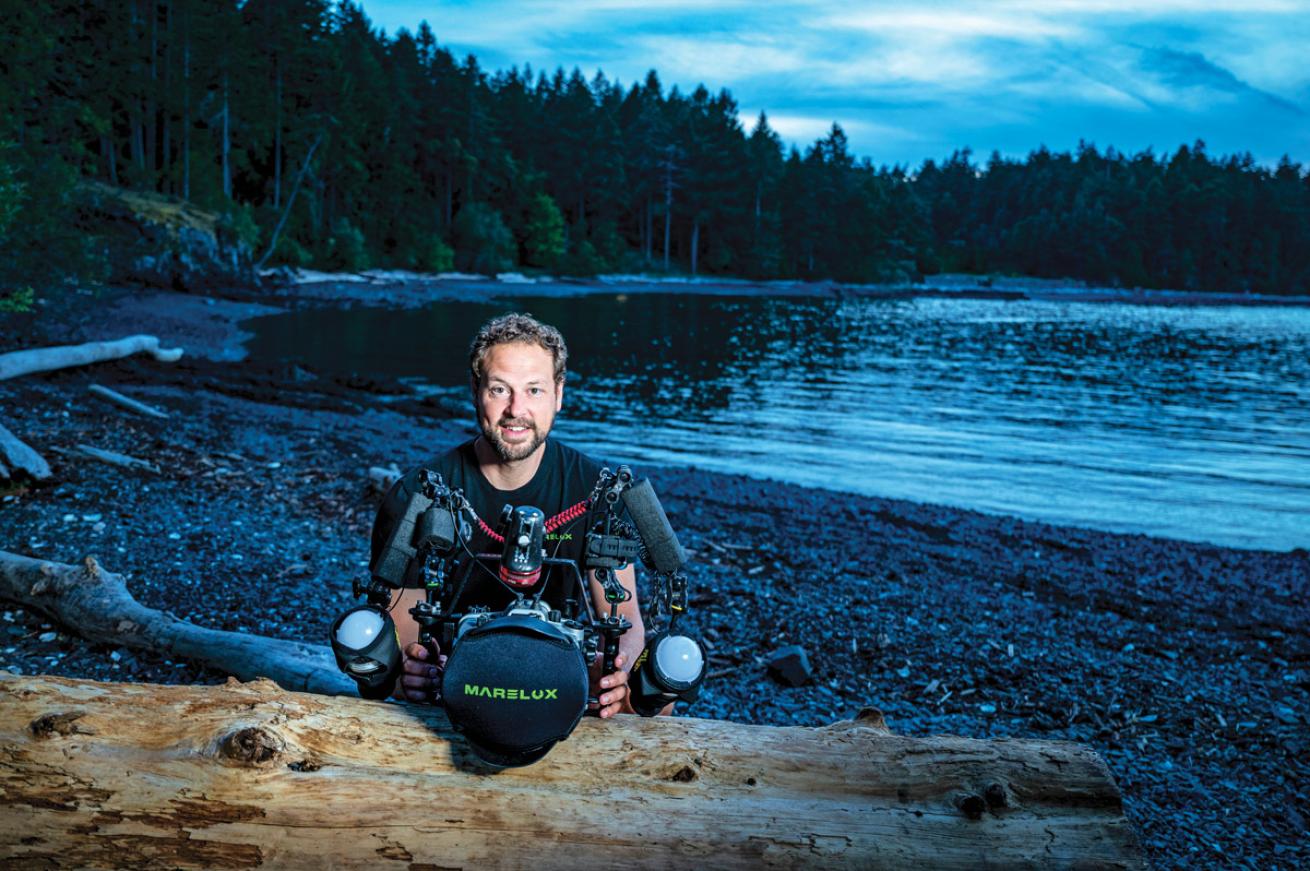
KAYLA DALLA ROSAA picture of Shane Gross
YEAR DIVE CERTIFIED: 2001
AGE WHEN CERTIFIED: 15
DIVE CERTIFICATION LEVEL: Master Scuba Diver Trainer
WORDS TO LIVE BY: “It’s really us humans we are trying to save. The Earth will be fine, after all, it has all the time in the world. We don’t.”
WEBSITE: shanegross.com
INSTAGRAM: @shanegrossphoto
For 14 years, Shane Gross has been honing his craft and earning photography accolades as a marine conservation photojournalist. His viral photo of a deceased sea turtle in 2020 had people from around the world stunned. How could something so devastating be hauntingly beautiful? Gross’ images have that effect on people, and that’s the point. A Canadian who spent more than a decade diving in the Bahamas, Gross aims to engage and educate about the serious issues threatening our oceans and marine life through his imagery. He also recently created a unique online mentorship program for budding underwater photographers, offering subscribers tips and advice as well as behind-the-scenes photography and conservation content through the subscription website Patreon. For his dedication to documenting the ocean’s beauty and challenges, Shane Gross is our September Sea Hero.
Related Reading: The Future of AI Editing and Underwater Photography
Q: In 2020 your photo of a decaying sea turtle tangled in fishing line went viral. Why do you think that image resonated with so many people?
A: They say the eyes are the windows to the soul, and this poor sea turtle had its eyes missing. When you first look at the image it appears to be a happy turtle, but it soon dawns on you this turtle is dead, it suffered, and it’s our fault. Humans have a soft spot for sea turtles, so seeing one in such a state is sad and shocking, and sometimes that can lead to people caring and sharing.
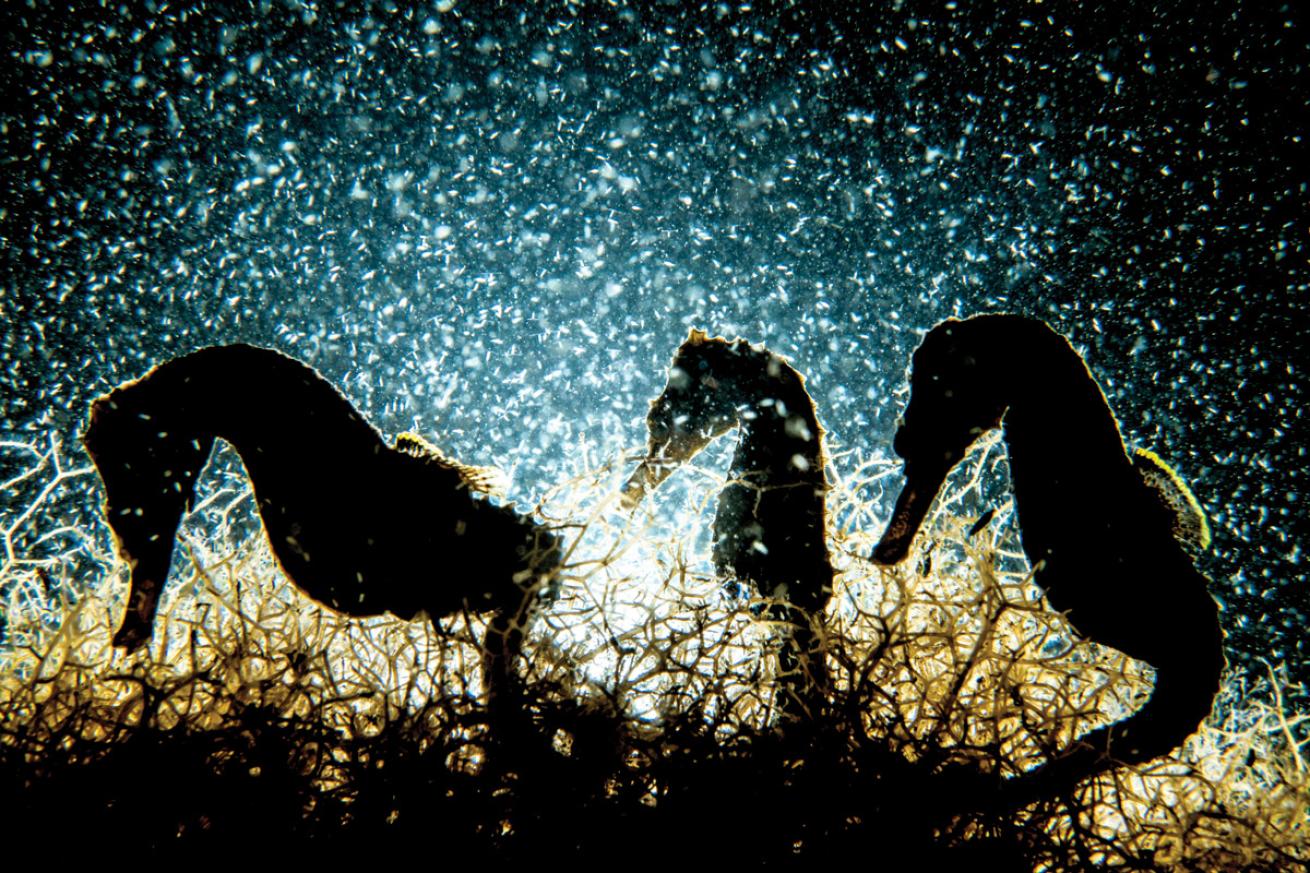
SHANE GROSSA trio of seahorses in Eleuthera Island’s Seahorse National Park. This was one of the images used to underscore the importance of making this area a no-take marine reserve in 2021.
Q: Many underwater images only show the beauty of our oceans. What is your motivation for capturing the raw and sometimes uncomfortable moments too?
A: For me, it’s about approaching the truth of our oceans. Of course, the truth is so vast and complicated I’ll never fully reach it, but it’s the pursuit. I try to find a balance between showing the beauty and the horror we are causing, because both are true, and both may lead to positive change. Some people will quickly look away from the horror but may respond to the beauty. Others may look at the beauty and think everything is OK and need to see the horror to wake up. It’s also important to highlight those people and projects that are having a positive impact. It’s amazing to me how many dedicated people are out there working on these problems. This Sea Hero thing is wonderful, and I am so honored to be included!
“We need to get over our differences and work together to solve these issues.”
Q: Tell us more about your collaboration with Bahamas Reef Environment Educational Foundation to make your book, Bahamas Underwater, available to schoolchildren in the Bahamas.
A: I’m so proud that every school in the Bahamas now has at least one copy of my book available for their students. I looked for a book dedicated to all the beauty, mystery and conservation of the Bahamas’ vast ocean wilderness and one didn’t exist, so I decided to create one. But I didn’t want it to be only accessible to people who could afford to buy it. I approached BREEF with the idea of distributing it to all the schools in the Bahamas for free because I’d worked with them for a long time and knew they could get it done, and they did. In addition to getting the book to all the schools, we made the book available for sale, with all proceeds going to BREEF’s Kids Sea Camps. I’m a huge believer in experiential learning, and these sea camps are amazing. Under the supervision and guidance of marine biologists, they take schoolchildren snorkeling in the ocean to learn about it and its conservation. I believe this will lead to real, long-term conservation change. I’m very proud to support it. Buy your book at all the shops in the Bahamas or online, available worldwide at shanegross.com.
Q: What was your most challenging photo assignment and why?
A: Seagrass. The story of seagrass at first glance seems uninteresting. I was worried about how I could make it exciting to anyone other than seagrass scientists. It’s a vast, international story with a lot of nuances that have, so far, taken me to eight countries and several locations around the world, including Egypt, Spain, Indonesia, Atlantic and Pacific Canada, Virginia, Florida, Alaska, Cuba and the Bahamas. As you can guess, it has been an expensive story to cover and has been funded by my selling images, which is not exactly lucrative these days!
Related Reading: Pollutants from Sunscreens Accumulate in Seagrass, New Study Finds
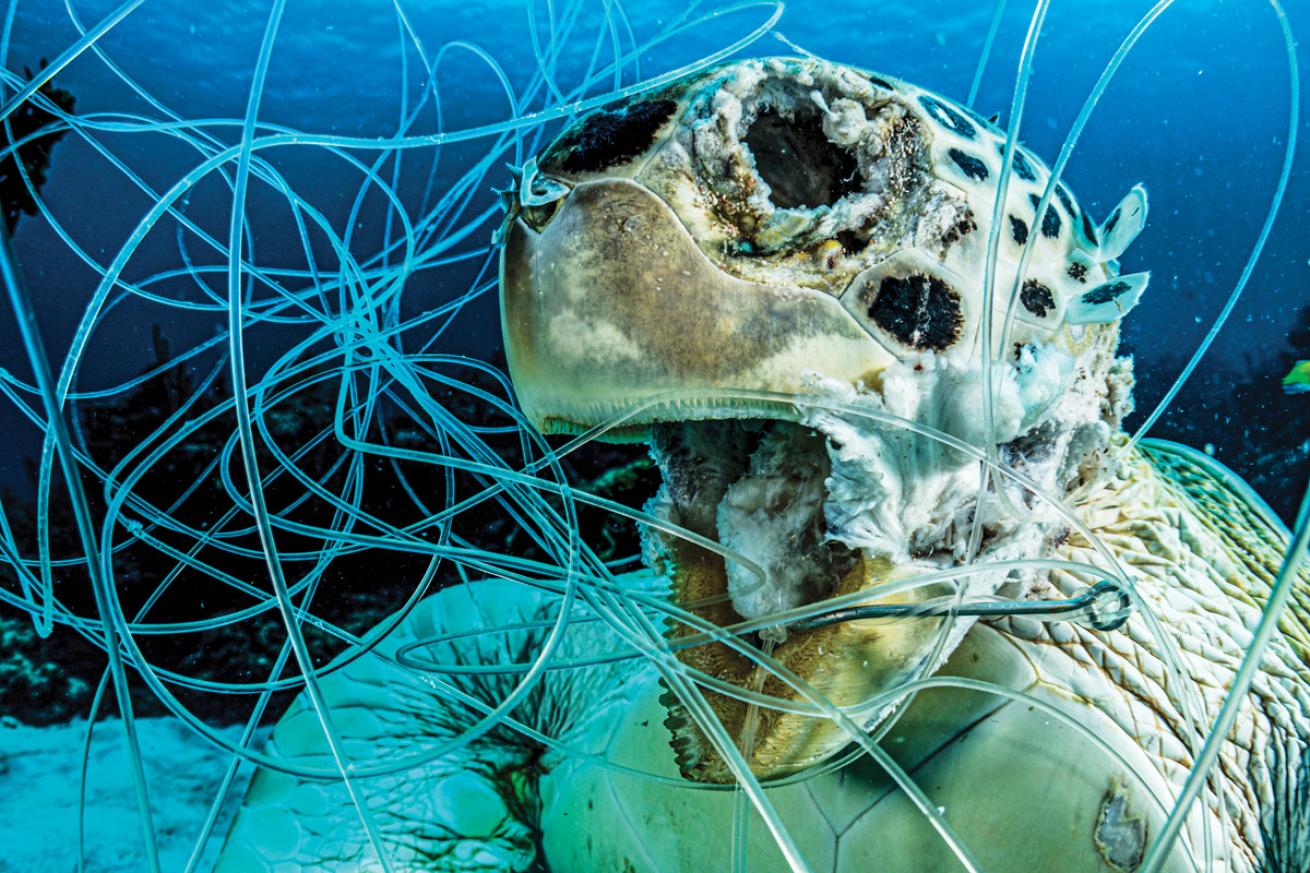
SHANE GROSSThe endangered green sea turtle in this viral photo was found drowned with a hook in its mouth. Gross uses shocking images like this to spur people to conservation action.
Q: What do you view as the greatest challenges in marine conservation today? How are these challenges reflected in your own work?
A: We need to collaborate with people who might have different political views and ways of seeing the world. We need to get over our differences and work together to solve these issues. For example: We conservationists and commercial fishermen want more fish in the ocean. Let’s work together rather than battle against each other. I think we’ve come to realize the general population isn’t going to make major changes to help save the world; it’s going to come down to leaders (political, business and others) and technology. But we still have a role to play. We need to use all our skills, talents and abilities for conservation; it just so happens that mine is photography and storytelling.
Related Reading: Youth in Action: DiveN2Life Inspires the Next Gen
Q: What’s been your most satisfying moment?
A: Seeing a place I care deeply about gain protection. The campaign for turning Seahorse National Park on Eleuthera Island into a protected national park used my images. It’s impossible to quantify whether my images made any difference or not, but I like to think they helped people connect emotionally so they were more inclined to say yes to its protection.
Q: Who are your sea heroes?
A: The people behind the scenes with no social media following, no limelight, doing the uncelebrated work of collaborating with governments and big business to make policy change like the establishment of marine protected areas, fishing limits based on science, plastics bans, emissions limits, species protections, etc. It’s hard, monotonous work that moves conservation forward. It would be silly to not also mention the scientists who inform us when something is going well or not and provide potential solutions. They are also putting in hard, important work, and we owe it to them to listen.
Q: What's been your most surprising moment?
A: Every time I look at my images on a computer screen as opposed to the back of my camera! haha
Q: Is there anything we did not ask that you would like readers to know? Tell us what's important to you!
A: Get in the ocean, get in nature, take your kids, your friends, your family. That’s how we all begin to care.
Each Sea Hero featured in Scuba Diving receives a Seiko SRPD43 watch valued at $525. For our December issue, judges select a Sea Hero of the Year, who receives a $5,000 cash award from Seiko to further their work. Nominate a sea hero at scubadiving.com/seaheroes.

